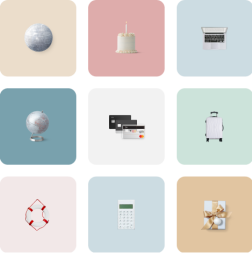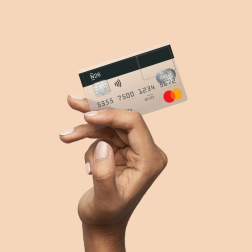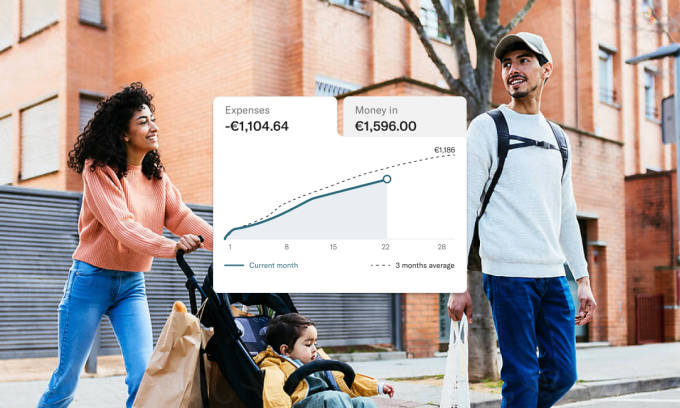
Budgeting: Understanding the 3 Types of Expenses
During Financial Literacy Month, we’re breaking down budgeting to help you get a better grasp of your money.
3 min read
When you break things down, your budget has two main parts: your income and your expenses. While calculating your income might be relatively straightforward, for many, expenses can be a little more complicated to understand. Each month you might have to keep track of tens or hundreds of transactions, and categorizing your spending can be a very real challenge.
Yet staying on top of your expenses is essential for your long-term financial wellbeing. For Financial Literacy Month, we’re discussing the ins and outs of budgeting to give you the necessary tools and information to help you take control of your spending. And that starts by understanding the three types of expenses: fixed, variable, and periodic.
What is a fixed expense?
A fixed expense is an expense that doesn’t change. It is “fixed” or “set” at a certain amount, so it costs the same every time you encounter it. Fixed expenses are easier to budget for on an ongoing basis because you know exactly how much money you will need. Some examples of fixed expenses include:
- Car payments
- Rent
- Mortgage payments
- Health insurance
You can expect to pay fixed expenses at regular intervals, usually monthly. Make sure you keep track of them in a way that helps you set them apart from other spending, so you always have enough money to cover them, and to avoid any late or returned item fees.
N26 Tip: With an N26 account, you can manage these types of expenses over time by tagging your transactions within the app. Add a tag like “#fixedexpense” or “#recurring” to each transaction, to help you plan for and understand any recurring fixed expenses.
Save up with Spaces

What is a variable expense?
A variable expense is any expense that changes over time. The amount “varies” depending on your daily spending decisions. Variable expenses are a little more difficult to budget for because you never know exactly how much they will be. However you can estimate the amount, or create guidelines to avoid overspending. Some examples of variable expenses include:
- Groceries
- Eating out
- Travel
- Shopping
- Unexpected expenses
You might encounter variable expenses like groceries periodically or they can come when you least expect them. Always try to set money aside for amounts you see regularly, and adjust them in a way that’s realistic to your specific situation.
What is a periodic expense?
A periodic expense is an expense that occurs over intervals or periods. These are similar to fixed expenses, but they are less frequent — maybe once a year instead of once a month. Like fixed expenses, these are easier to budget for, but given how spread out they tend to be, you have to be extra careful to set money aside to cover them. Some examples of periodic expenses include:
- Tuition
- Taxes
- Back-to-school supplies
- Dental exams and cleanings
- Pet vaccinations
- Oil changes
You’ll come across these types of expenses on a regular yet infrequent basis. The amounts for these may vary, but usually tend to be easier to plan for.
How expense types can work for you
Categorizing your spending isn’t just about labeling and organizing your money. It can also help you get a better understanding of your financial situation and plan for the future. When you categorize your expenses, you’ll know how much money you should be setting aside each month, where you might be able to cut costs, and how you can make your money work for you to help you reach your goals. Want to save for a getaway this summer? See which variable expenses you could reduce to help you put some extra money aside.
The bank you'll love

Manage your spending with N26
Understanding the three types of expenses is a great way to create a budget that works for you. N26 helps you take charge of your money, with powerful and simple tools to manage and understand your finances. Tag your transactions, track your monthly expenses with automated spending statistics, and discover how easy it can be to stay on top of your money with a banking app designed with you in mind.
Find similar stories
By N26
Love your bank
How do savings accounts earn interest?
5 min read
Related articles
These might also interest youHow to save money fast: 17 tips to grow your savings
Whether your financial goals are big or small, these life hacks will help you save money faster.
How to budget for household expenses
Developing a household budget takes some work, but it’s always a good idea to dive into your spending habits to see where you could save some cash. Read our tips on budgeting for household expenses.
Living on a budget—6 money saving steps to a lower cost lifestyle
Discover 6 ways to save money while living on a budget


